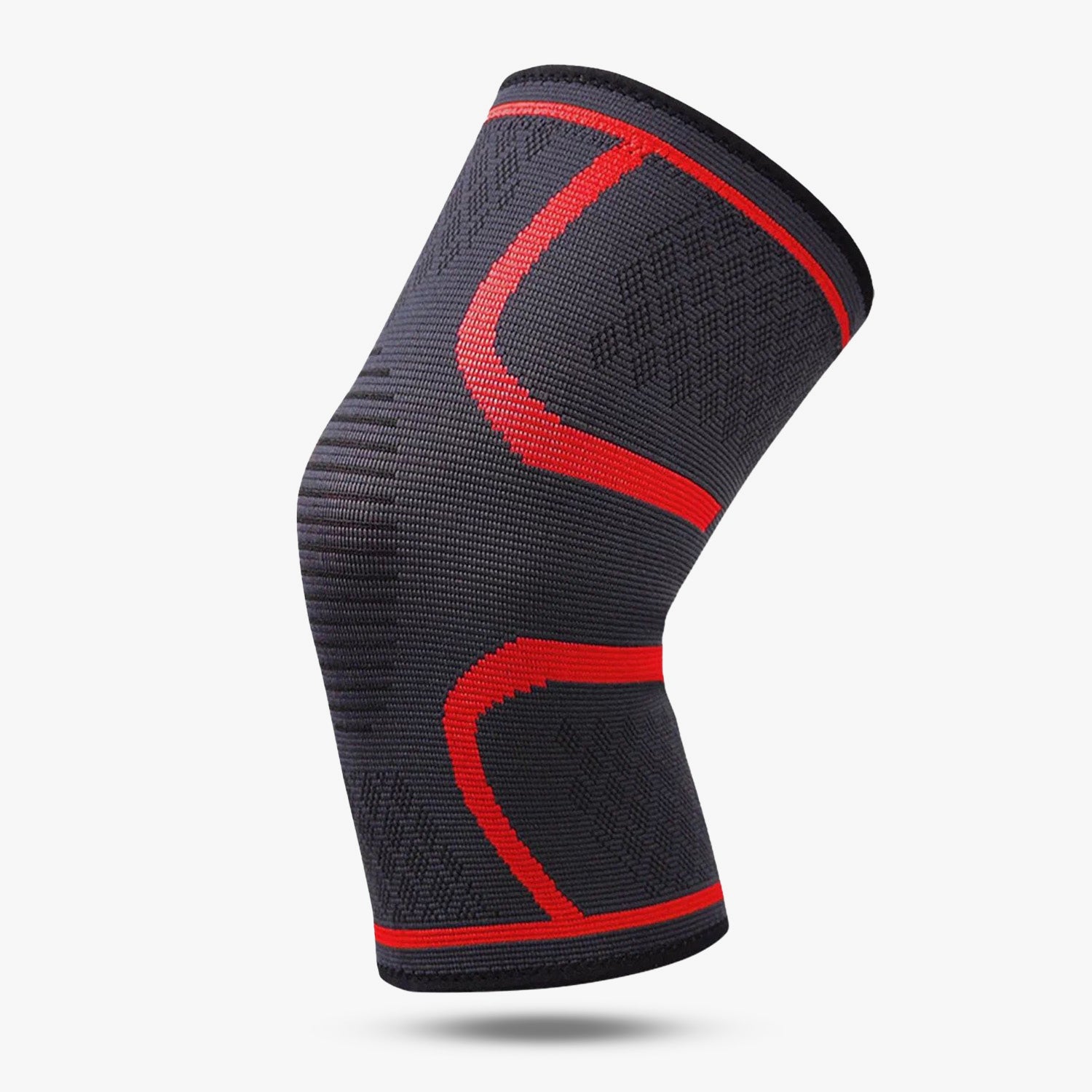The knee is a complex joint. It’s a hinge-type synovial joint allowing for flexion, extension and rotation.
Before a lift, many powerlifters sheath their knees in tight neoprene wraps to help them store elastic energy and provide stability. But are they actually necessary or helpful? It really comes down to your knee health and specific fitness goals.
How do I know if I’m wearing the right size?
Knee wraps are made of a similar elastic and durable material to wrist wraps. They are meant to be wrapped around the knee in a spiral and come in varying thicknesses, depending on how much support or compression is needed. Typically, they are worn by powerlifters and other strength athletes to help them lift heavier weights on their squats. However, they are not recommended for beginners or anyone who doesn’t have proper squatting form. For more information visit the website https://www.tumblr.com/bestkneewrapforbakerscyst/715573074726158336/how-to-choose-the-right-knee-wrap-for-your-bakers?source=share.
The easiest way to know if you are wearing the right size is by measuring your leg with a soft tape measure. You can also use a ruler, but it won’t be as accurate. Once you have your measurement, refer to the manufacturer’s size chart to find a pair that matches. When buying a pair of knee sleeves, it is almost always better to go smaller than larger, as this will ensure that you are getting the maximum amount of compression and support.
Once you have the right pair of knee sleeves, they should feel snug on your leg but shouldn’t be so tight that they pinch or cut off blood flow. A good pair of knee sleeves will fit comfortably around your calf and allow you to move easily in the gym without any irritation or discomfort.
It’s also important to make sure that the back strap on the brace sits directly below your knee crease. This is the most effective place to anchor the wraps and will provide the most compression. The back strap should be tightened before the front strap to ensure that you have a proper fit. Once the back strap is tight, then you can start to wind the front straps around your knee to complete the wrap.
How do I know if I’m wrapping my knees correctly?
Knee wraps can help relieve knee pain and support the ligaments and muscles of the knee joint. They can also aid in recovery from sprains and other knee injuries. In addition, they can be used to improve the performance of certain exercises such as squats and lunges. However, it is important to know that knee wraps do not cure or treat a specific injury or problem. They can only provide support and stability to the knee and should be worn for short periods of time and not during all training sessions.
Knee wraps are a common sight in the gym, especially amongst powerlifters. They are a key piece of equipment that can help lift a heavy squat. They work by storing and releasing elastic energy during the eccentric phase of the lift which helps to push the lifter up. However, it is worth noting that using knee wraps can also alter a lifter’s form and increase the risk of injury.
If you’re not sure how to wrap your knees properly, it is best to ask a trainer or coach to show you the correct technique. There are a number of different ways to wrap your knees, but the most popular way is to use a hook and loop system. This ensures that the wrap won’t slip down during a lift, which could lead to an injury.
Whether you’re new to weightlifting or an experienced athlete, having the right gear is essential for success. Shop our full range of knee wraps today to find the perfect pair for you! We offer both hook and loop wraps, as well as a wide selection of other knee braces and accessories.
How do I know if I’m wearing the right amount of compression?
Whether you have knee sleeves that just slip on the outside of your leg or an off-the-shelf hinged brace, you need to make sure it’s properly fitted and not too tight. If the sleeve is too tight it could cut off circulation like a tourniquet and cause worse damage. If it’s too loose, it won’t provide the necessary compression.
If you get a prescription-grade sleeve from a doctor or physical therapist, they can take your measurements and help you find the right fit for your legs. If you’re buying non-prescription knee sleeves, try them on first thing in the morning when your legs are less likely to be swollen.
There are different levels of compression, and doctors can recommend a specific level based on your symptoms or diagnosis. For example, high compression is used to treat more severe leg health problems such as blood clots and lymphedema. It’s also often prescribed for arthritic knee pain.
Knee sleeves are made out of a variety of materials, and they’ll vary in their ability to wick away sweat, keep you cool, and prevent skin irritation. Some people develop skin sensitivities when wearing synthetic knee sleeves, so it’s important to check the label before you buy.
For those who sit all day at work, knee sleeve can decrease occupational edema (swelling in the ankles and feet) by keeping the knees moving during the day. They can also be worn to bed to increase comfort while you sleep. Just be careful not to wear them too long or you could end up with achy knees in the morning. A good rule of thumb is to leave them on for about a week to feel the benefits.
How do I know if I’m wearing the right amount of support?
The knee is a complex and extremely important joint. It’s made up of three bones (the femur, tibia and shin), a joint capsule, ligaments, muscles and tendons. It also has synovial fluid inside that lubricates things to allow movement and reduce friction. Because of all that, the knee should be treated with extreme care. That’s why a good pair of knee wraps or sleeves is important for most lifters.
Knee wraps help improve squat performance by storing and releasing elastic energy to help you get up out of the bottom position. They’re mainly used by competitive powerlifters, Olympic weightlifters and other strength athletes looking to increase their 1 rep max. They are not recommended for beginners or people with bad squat technique.
Traditional wraps are time consuming to apply and can start cutting off blood flow if worn for too long. They’re also not comfortable and can cause you to feel sick or weak, even if you aren’t. They also soil easily and can be difficult to clean.
Knee sleeves, on the other hand, are much easier to use. They’re quick and easy to tighten and loosen, and they provide a good amount of support without restricting movement or blood flow. They can also be combined with icing and/or heating, which is great for pain relief, soothing swollen joints and tendons, increasing mobility and decreasing inflammation. They can also keep your knees warm, which helps with recovery and reduces the risk of injury. The only downside is that they don’t give you the same stability boost as wraps. The best knee sleeves are made of high quality fabric and have a soft, comfortable fit that doesn’t cut off circulation.
How do I know if I’m wearing the right amount of comfort?
Most neoprene knee sleeves are adjustable so you can find just the right fit. You should also try them on and move around to see how they feel. They should not feel constricting or pinch into your skin. You should also be able to bend your knee comfortably without any irritation or pain. You should avoid neoprene knee sleeves that are too tight as they can restrict blood flow to your knee.
Knee sleeves should always be worn loose enough to allow for proper movement but they shouldn’t be so loose that they slide off your leg. When you’re adjusting the sleeve make sure that it’s sitting properly over your kneecap and then check that the back strap is located at the top of your calf muscle. This will anchor the sleeve so that it isn’t pulling your leg up or down but rather allowing your knee to bend in the range of motion prescribed by your doctor.
When you’re wearing a pair of sleeves, you should wear them over your pants or leggings. This will ensure that they’re anchored correctly and that they won’t slip off while you’re working out or playing sports. Putting them on over your clothes will also protect your knees from sweat and dirt that may build up underneath the sleeves if you wear them to sleep.
As a general rule, you should wash your sleeves every two weeks or so. This will keep them clean and fresh so that they continue to work well for you. It’s important to use a sport-specific detergent that will kill bacteria in your sweat so that your sleeves don’t smell as bad.









